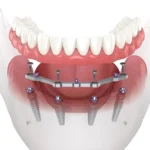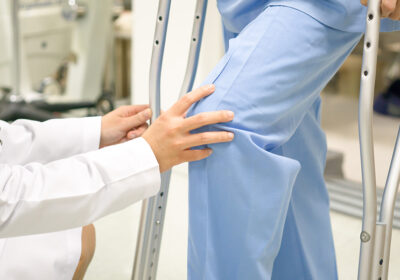
What is COPD? Unveiling the Basics
Chronic Obstructive Pulmonary Disease, commonly known as COPD, is a progressive lung condition that makes it increasingly difficult to breathe. It encompasses a group of lung diseases, including emphysema and chronic bronchitis, that block airflow and make breathing laborious.
Defining Chronic Obstructive Pulmonary Disease
COPD is characterized by long-term respiratory symptoms and airflow limitation due to airway and/or alveolar abnormalities. It is often caused by significant exposure to noxious particles or gases.
- Progressive nature: The disease worsens over time.
- Irreversible damage: The airway damage in COPD is not fully reversible, unlike conditions such as asthma.
- Symptom onset: Symptoms usually emerge in individuals over 40 years of age.
The Anatomy of the Lungs and COPD Impact
The lungs are essential for gas exchange, taking in oxygen and expelling carbon dioxide. In COPD, this process is hindered due to:
- Narrowed airways: Inflammation and mucus buildup narrow the airways, making it hard to breathe.
- Damaged alveoli: The tiny air sacs in the lungs, or alveoli, are destroyed, reducing oxygen intake.
Differentiating COPD from Other Respiratory Conditions
COPD is often confused with other respiratory conditions, but it has distinct features:
- Chronic bronchitis: Defined by a persistent cough with mucus production for at least three months in two consecutive years.
- Emphysema: Characterized by damage to the walls between the alveoli, leading to larger but fewer air sacs.
Understanding these differences is crucial for accurate diagnosis and treatment.
Identifying COPD: Symptoms and Diagnosis
Recognizing the Symptoms of COPD
Chronic Obstructive Pulmonary Disease (COPD) manifests through a variety of symptoms that may worsen over time. Key indicators include:
- Persistent cough, often referred to as a ‘smoker’s cough’
- Increased breathlessness, particularly during physical activities
- Frequent chest infections
- Wheezing and tightness in the chest
Early recognition of these symptoms is crucial for timely diagnosis and management of the disease.
Diagnostic Procedures for COPD
To confirm a diagnosis of COPD, healthcare providers employ several methods:
- Detailed medical history and physical examination
- Spirometry test to measure lung function
- Chest X-rays or CT scans to visualize lung structure
- Arterial blood gas analysis to assess oxygen and carbon dioxide levels
These procedures help in determining the presence and extent of COPD.
Understanding the Stages of COPD
COPD is classified into four stages based on severity:
- Stage I: Mild COPD with minor airflow limitation
- Stage II: Moderate COPD with worsening airflow limitation
- Stage III: Severe COPD with significant airflow limitation
- Stage IV: Very severe COPD with very severe airflow limitation
Understanding the stage of COPD is essential for tailoring the treatment plan and predicting patient outcomes.
Risk Factors and Prevention of COPD
Primary Causes and Risk Factors for COPD
Chronic Obstructive Pulmonary Disease (COPD) is primarily caused by long-term exposure to irritants that damage the lungs and airways. The most significant of these is smoking, which accounts for about 85% to 90% of all COPD cases. Other risk factors include:
- Exposure to secondhand smoke
- Occupational exposure to dust and chemicals
- Genetic factors, such as a deficiency in the protein alpha-1 antitrypsin
- A history of frequent childhood respiratory infections
- Age, as COPD develops slowly over years
Lifestyle Changes to Prevent COPD
Preventing COPD involves making key lifestyle changes to reduce the risk of lung damage. Quitting smoking is the most effective step one can take. Other preventive measures include:
- Avoiding secondhand smoke and removing oneself from environments with poor air quality
- Wearing protective gear when exposed to dust and chemicals at work
- Regular exercise to strengthen the respiratory muscles
- Maintaining a healthy weight
- Getting vaccinated against influenza and pneumonia
The Role of Environmental Factors in COPD Development
The environment plays a crucial role in the development of COPD. Long-term exposure to air pollutants, such as vehicle exhaust and industrial emissions, can contribute to the onset and progression of the disease. Indoor air quality is also important, as the use of biomass fuels for cooking and heating in poorly ventilated spaces is a known risk factor. Efforts to improve air quality, both indoors and outdoors, are essential in preventing COPD.
Living with COPD: Management and Treatment Options
Coping with Chronic Obstructive Pulmonary Disease (COPD) requires a comprehensive approach that encompasses both medical treatments and lifestyle adjustments. Effective management aims to alleviate symptoms, improve quality of life, and slow disease progression.
Medical Treatments for COPD
Medical treatment for COPD typically involves a combination of medications, such as bronchodilators and corticosteroids, to help open the airways and reduce inflammation. Oxygen therapy may also be prescribed for those with severe COPD to ensure adequate oxygen levels in the blood. In advanced cases, surgical options like lung volume reduction surgery or a lung transplant might be considered.
- Bronchodilators: Inhaled medications that relax the muscles around the airways.
- Corticosteroids: Anti-inflammatory drugs that can be inhaled or taken orally.
- Oxygen therapy: Supplemental oxygen for patients with low blood oxygen levels.
- Surgical options: Procedures to remove damaged lung tissue or replace the lung.
Pulmonary Rehabilitation and Exercise
Pulmonary rehabilitation is a critical component of COPD management. This program combines exercise, education, and support to help patients improve their physical condition and manage their symptoms. Regular exercise, particularly cardiovascular and strength training exercises, can significantly enhance lung function and overall well-being.
- Exercise training: Cardiovascular and strength exercises to improve lung function.
- Education: Information on managing symptoms and medication use.
- Support: Emotional and social support to cope with the disease.
Nutrition and COPD: What to Eat and Avoid
Nutrition plays a vital role in managing COPD. A balanced diet can help maintain a healthy weight, which is crucial since both underweight and overweight conditions can exacerbate COPD symptoms. Patients are advised to eat nutrient-rich foods and avoid those that can cause bloating and shortness of breath, such as high-sodium and gas-producing foods.
- Nutrient-rich foods: Fruits, vegetables, lean proteins, and whole grains.
- Foods to avoid: High-sodium foods, gas-producing foods, and large meals that can lead to bloating.
Adopting these management strategies can make a significant difference in the lives of those living with COPD. It is also important for patients to stay informed about their condition and treatment options. For instance, a website provides information on mesothelioma, a condition related to COPD through asbestos exposure. Such resources can be invaluable for patients seeking legal options or benefits, especially for veterans who may be eligible for VA benefits.
The Future of COPD: Research and Emerging Therapies
The landscape of Chronic Obstructive Pulmonary Disease (COPD) is on the cusp of transformation, with research and emerging therapies promising to redefine the management and treatment of this chronic condition. The relentless pursuit of knowledge has led to a deeper understanding of the disease, paving the way for innovative approaches that could significantly improve patient outcomes.
Advancements in COPD Research
Research into COPD has made significant strides in recent years, uncovering the intricate mechanisms that underlie the disease. Key areas of focus include:
- Genetic factors: Identifying genetic markers that may predispose individuals to COPD.
- Inflammatory pathways: Understanding the role of inflammation in COPD progression.
- Lung regeneration: Exploring the potential for lung tissue repair and regeneration.
These discoveries are not only crucial for developing targeted therapies but also for enhancing diagnostic accuracy and predicting disease progression.
Innovative Treatments on the Horizon
The future of COPD treatment looks promising with several innovative therapies in development. These include:
- Bronchoscopic lung volume reduction: A minimally invasive procedure to improve lung function.
- Biologic drugs: Targeting specific molecules involved in COPD inflammation.
- Stem cell therapy: Investigating the use of stem cells to repair damaged lung tissue.
As these treatments undergo clinical trials, there is hope that they will offer more effective and personalized options for COPD patients.
The Importance of Clinical Trials for COPD
Clinical trials are the cornerstone of advancing COPD treatment. They provide the evidence needed to:
- Validate the safety and efficacy of new therapies.
- Understand the long-term impacts of treatment.
- Tailor interventions to individual patient needs.
Participation in clinical trials not only contributes to the collective understanding of COPD but also offers patients access to cutting-edge treatments that are not yet widely available. The commitment to ongoing research and the development of new therapies is a testament to the medical community’s dedication to improving the lives of those affected by COPD.


















